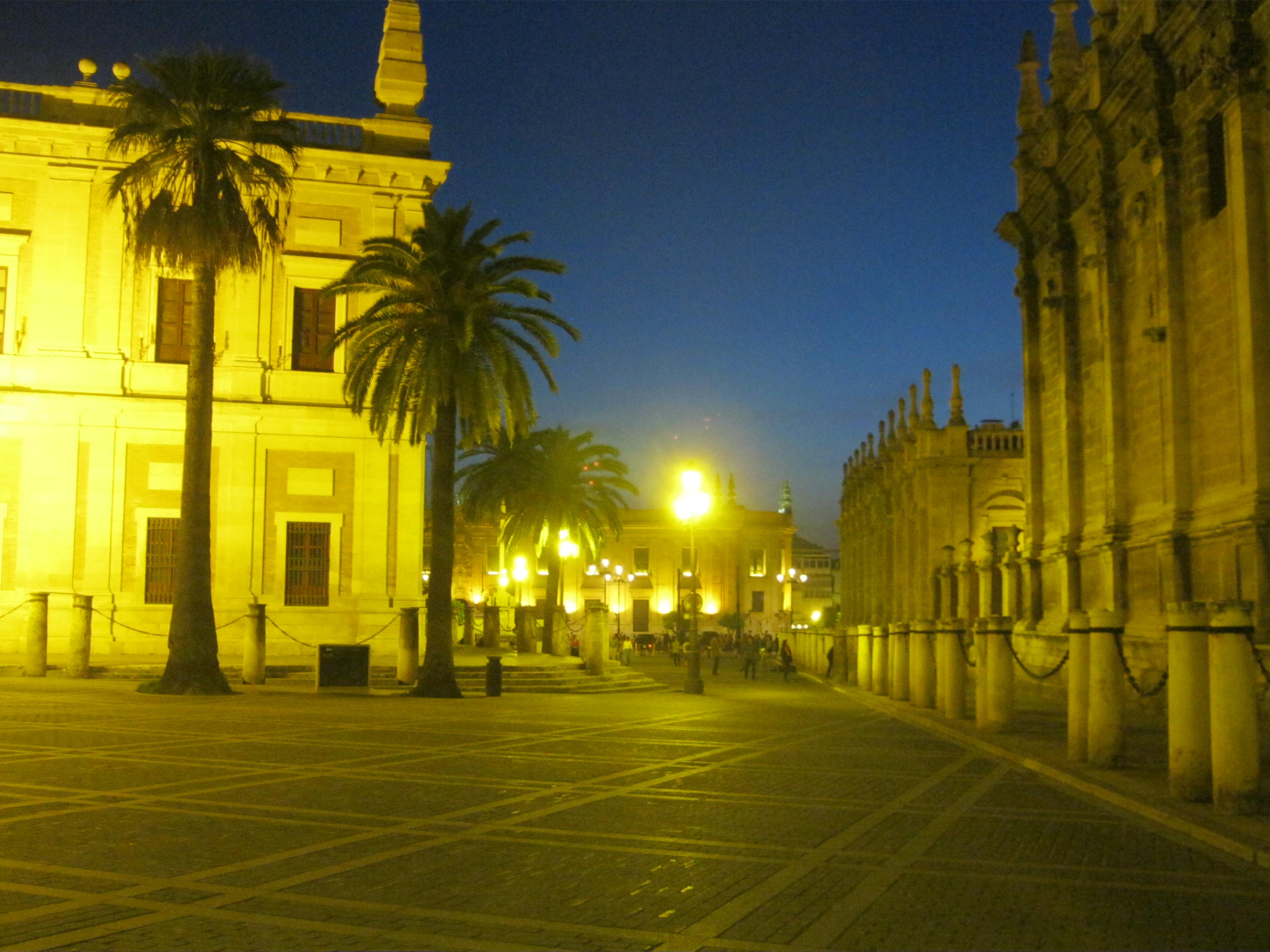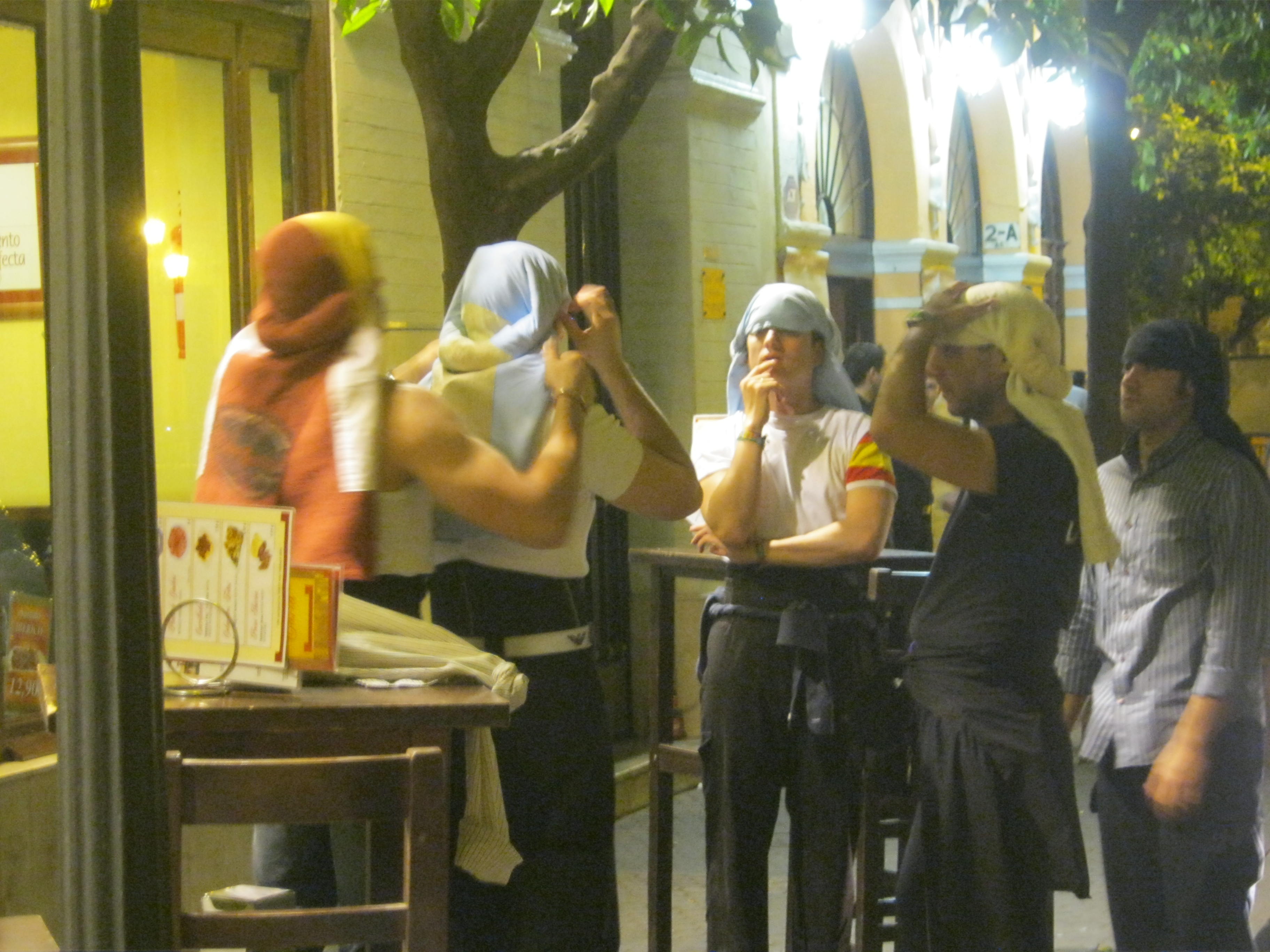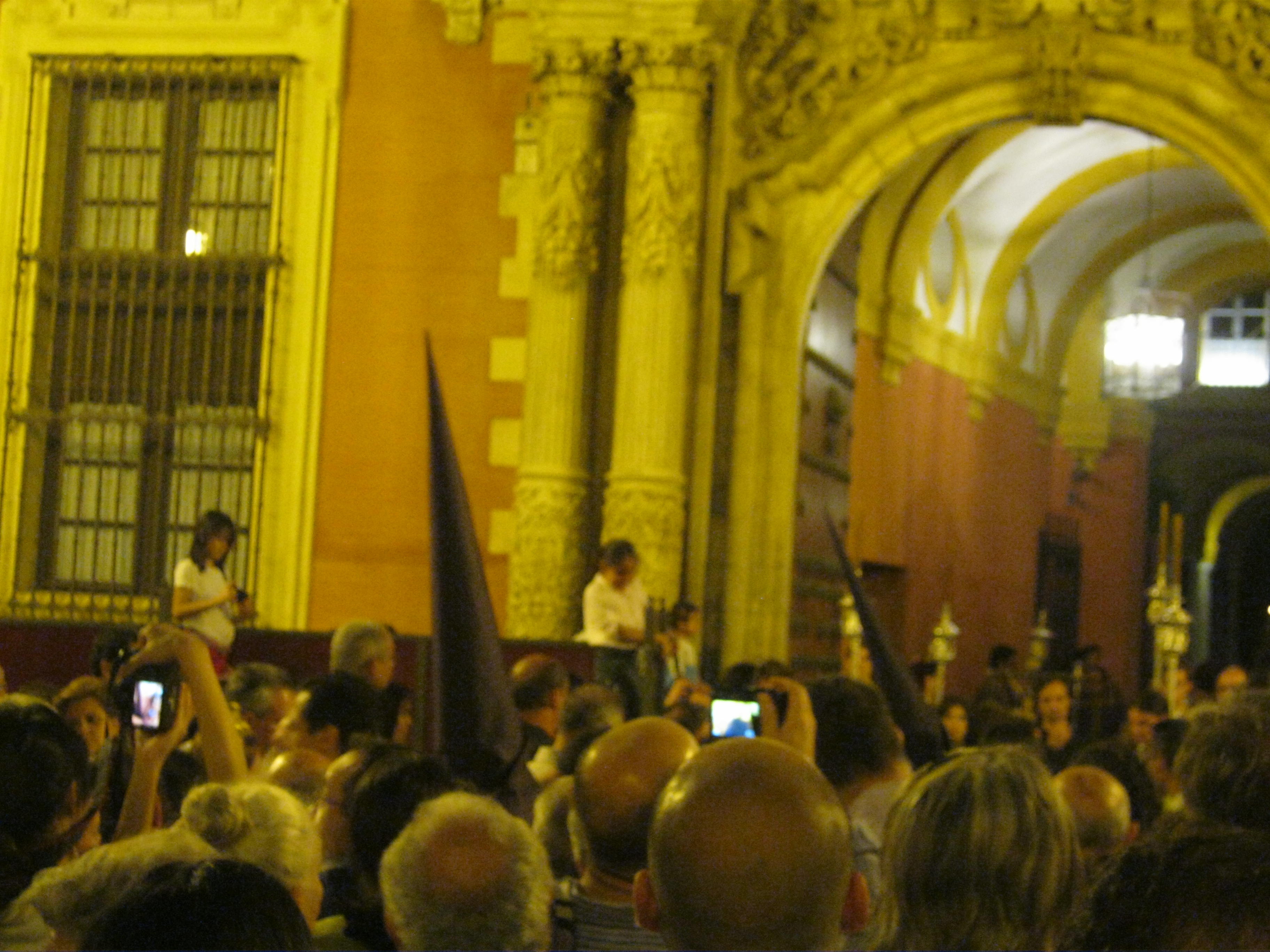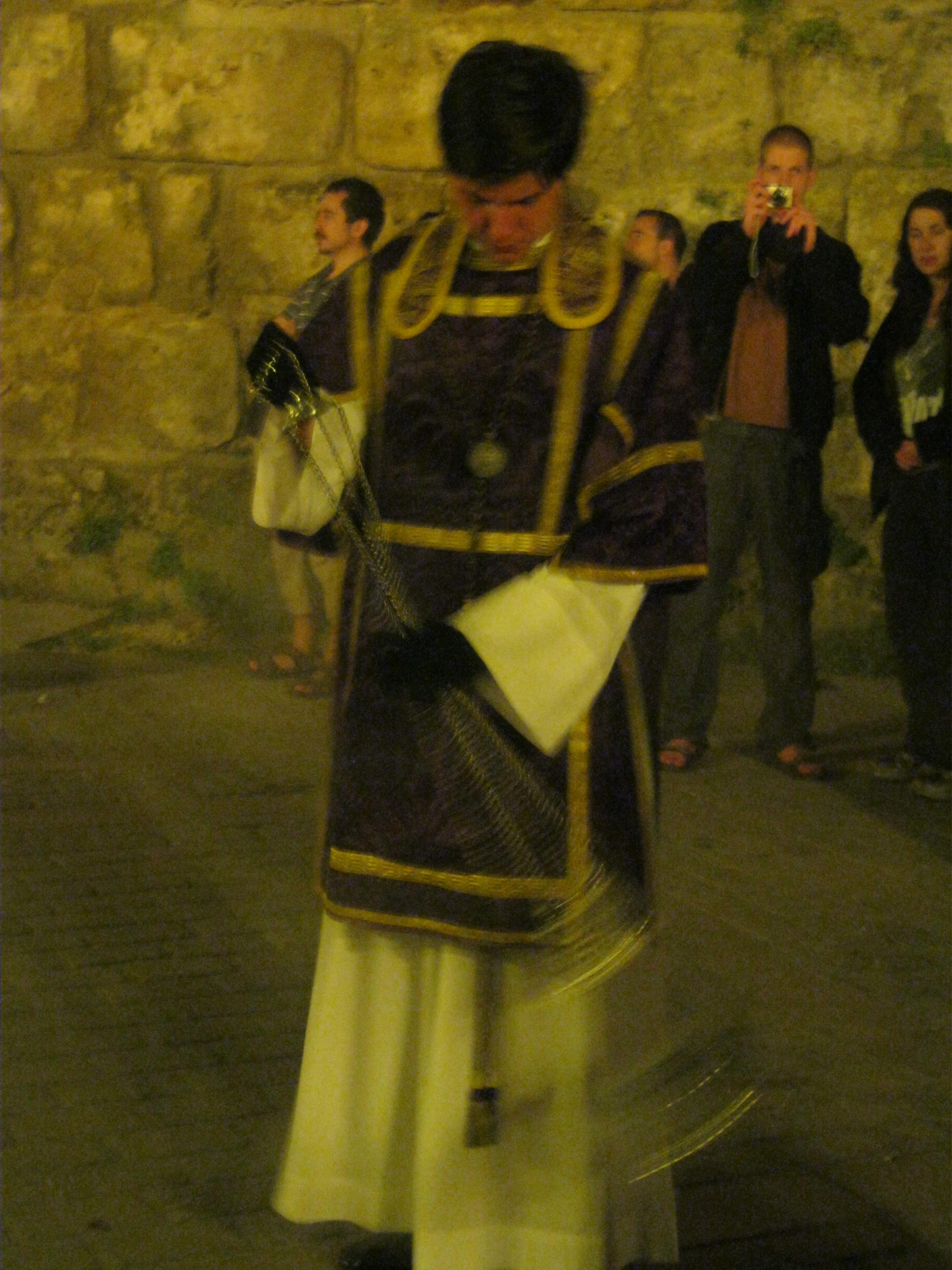Last night I was fortunate enough to be out in Seville. It was a beautiful spring evening, very mild, with an atmosphere of excitement and anticipation as the first Semana Santa pasos (floats carrying statues of Jesus and Mary) made their way around the narrow streets. I haven’t been in the city for this event for some years, as I loathe crowds, but yesterday it was quieter than I expected, and not packed and uncomfortable, as it gets later on in the week – tomorrow is Palm Sunday, and for many, Holy Week proper doesn’t start until Domingo de Ramos.
Semana Santa is manna from heaven for the bar industry – a constant stream of hungry, thirsty people during a ten-day period. They say that many bars make as much money during this week, if not more, than the rest of the year.
While it’s hugely important and popular with the Sevillanos themselves, it’s easy to forget what a major international event Semana Santa is in Sevilla, as well as in Malaga and other Spanish cities. I counted at least 20 professional photographers in about five minutes, and that was on Viernes de Dolores, the prologue to the main show. Here are some costaleros, the chaps who carry the pasos on their necks while bent over – sounds like a form of medieval torture – preparing their head padding. Check out those muscles.
Having seen the costaleros, we then found their procession leaving the Palacio Arzobispal next to the cathedral. I couldn’t get that close, but we did see some capirotes (pointy hoods) bobbing along above the heads of the crowds. I’m not religious, or spiritual, and my husband’s immediate instinct on seeing a procession is to run as fast as possible in the opposite direction (Catholic boarding school, dodgy priests), but I can’t resist watching for a few minutes.
After dinner we happened upon the same, silent procession by the Alcazar (if you’re familiar with wailing, miscordant Semana Santa bands, you’ll appreciate why I prefer the slienht ones, even if you don’t agree). I since found out that it was Cristo de la Corona and, unusually, it was on a carved wood paso, made of rosewood. Must have weighed a ton.
One of the unusual features of this procession – normally there’s a Virgin Mary statue too, but this hermandad just has the one – was the two men standing in front of the paso, holding its handles – they were in addition to the capataz, who walks in front, and shouts directions to the men underneath, who can’t see where they’re going – “Left a bit!”, “Stop!”, Time for a beer break!” etc. These two were wearing bags over their heads like hangman’s hoods, rather than pointy capirotes, which made them look even more sinister than usual.

Lucky for him his paso has an evening schedule - imagine how uncomfortable that hood would be in full sun.
Even without the mournful, brassy music, it is still a sensory experience – incense was floating on the balmy night-time air.
This is one of the hermandades (brotherhoods) whose hermanos go barefoot – part of their penance.
I’m hoping to convince my husband that we should take the kids into Seville tomorrow afternoon, for the traditional family stroll – you’re supposed to wear something new when you’re out. Whatever happens, it’s so much ingrained into life here that it’s hard to avoid, and it does bring with it certain undeniable commercial benefits.








I cannot imagine it. Around here, in Madrid, there are some processions, but they are small.
Typically, they would carry a statue out of the church to a chapel and a day later from the chapel back to the church. They are accompanied by drums and those drums always make me perk up. They are between awful and exciting, somber, solemn and powerful.
Yet mine is a modern small town. There is no religious “ambiente” to the Semana Santa festivities.
Thanks for your comment, Cantueso. The ambiente here in Sevilla is religious but also quite folkloric – it’s as much about venerating the statues (especially Mary) as it is about worshipping God. And, of course, having a celebration, being “en la calle” etc.
Pingback: The Andalucia Show: from Almeria to Seville | Scribbler in Seville